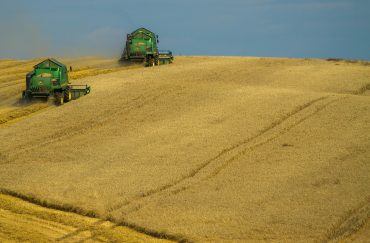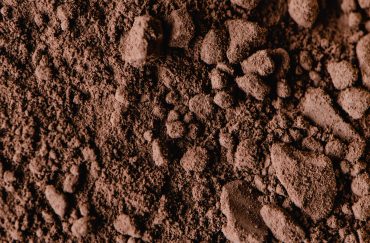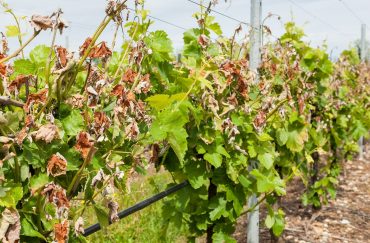Frost Protection
Frost protection is easier and better than ever
The Australian cropping sector loses, on average, $400 million per year1 to frost damage, which can impact plants even before the temperature dips below zero. The challenge is especially great in broadacre operations, and frost management has been the subject of intense research in recent years.
While producers can develop planting strategies to reduce the risk, or in some cases utilise physical frost barriers, many growers are not aware that the latest spray on products, developed in Australia using leading-edge R&D, can dramatically reduce the risk of frost damage.
JUMP STRAIGHT TO:
How does frost damage occur?
Frost occurs on clear nights, often in early spring, when the air temperature drops to 2°C or less. How much damage is caused depends on a number of factors, including the stage of plant development (the potential for damage is much higher around flowering), how quickly the night time temperature plummets, how low it goes on for and how long it stays there.
When the air around plants is moist, ice crystals form on the surface of the plant. Water in between plant cells freezes and draws water out of surrounding cells to form more ice. If this frost melts slowly, crops can recover from the damage, but this is less likely with a quicker thaw in spring, when damage can be severe.
When the air is dry, the situation is even more dire. In this situation, ice cannot form on the plant surface. The water between cells freezes quickly and forms large crystals. These crystals create holes in the cells and recovery is not possible. If this type of frost affects a flower or developing ovary, yield can be negatively impacted.
One of the reasons that frosts can rip holes in plant cells is a usually innocuous bacteria called Pseudomonas syringae2 (p. syringae), that is found all over most plants. On a typical day, the bacteria has no negative effect on a plant – but when the temperature drops, it creates big problems, because it leads to the formation of those icy spears inside the plant cells.
How no-till impacts the frost management challenge
Minimum tillage can mean large stubble residues. The rule of thumb is that an equivalent of twice the amount of yield is left behind as stubble. This acts as a barrier to the absorption of heat during the day, and further acts as a blanket at night to hold any heat in, so cold and frosty night air settles on the ground, causing frost damage. In addition, the presence of stubble can facilitate frost production at much warmer temperatures, so the threat becomes much more widespread.
Frost events are becoming more frequent
You would be forgiven for thinking that a warming climate would mean fewer frosts, but unfortunately the science indicates otherwise.
In fact, research suggests that the frost window has widened3 over the past two decades, especially in the eastern parts of Australia, despite an overall increase in mean minimum temperatures.
The analyses have revealed that in the eastern states, the frost window is starting up to 10 days earlier and ending up to 46 days later.
This means that frost will be more likely to occur in the future: the risk period will start earlier and finish later.
The pattern of later endings is consistent across much of southern Australia, while the earlier starts are more localised to western New South Wales and northern Victoria.
The frequency of extreme cold temperatures is also on the rise across much of southern New South Wales and northern Victoria. An average increase of four frost days4 and five cold nights each decade has been identified since 1970.
Protecting your crop
Pre-season
Field mapping
Cold air will pool in lower areas where the air has nowhere to escape. Avoiding low-lying areas, perhaps utilising them for grazing or oaten hay production instead, can be a valid strategy in frost-prone areas.
Understanding your frost tolerance
Most commercial crops are sensitive to frost to some degree. Flowering wheat and triticale, podding canola and field peas are among the most frost sensitive, while barley and oats are among the most tolerant, though they are not immune to the impact of frost.
Deciding when to sow
A cropping program with a widely spread flowering window can be a good strategy to manage frost risk. It can be achieved by using more than one variety and manipulating sowing date or selecting varieties with different phenology drivers, so the crop flowers over a wide window throughout the optimal flowering period.
The catch is that if the season has a hot, dry finish, later flowering crops will deliver lower yields. The loss of yield potential with late sowing is often greater than loss due to frost, so this approach is rarely a good long-term approach.
Stubble management
Extensive GRDC research5 trials have found that reducing stubble load reduces the severity and duration of frost events and has resulted in less frost damage and better yields under frost. Growers can minimise frost risk by reducing stubble loads back to grain yield potential, prior to seeding. This can be achieved by cutting low, windrow burning/chaff carting, stubble mulching, raking and burning, strategic blanket burning and summer grazing.
The trials found, however, that with multiple severe frost events, stubble reduction was not enough to increase yield.
During the season
Old-school frost protection products
A range of products that claim to improve frost tolerance in exposed plants has been around for a while, with active ingredients including seaweed extracts, natural and synthetic glycols, oils, resins, sugars, mineral salts and even a common fungicide.
Newer products including AgroBest Warrior have been shown in trials to deliver significant frost protection to a wide variety of crops. Warrior is a sister product to Envy, the market leading frost product in the horticulture sector.
AgroBest’s innovative products utilise a proprietary technique, based on R&D conducted in Australia, to dramatically improve plants’ frost tolerance. They do this by disabling the bacteria which cause ice shards to develop in plant cells. This bacteria, Pseudomonas syringae (p. syringae), causes damage by acting on specific proteins known as ice nucleation active proteins. P. syringae utilises ice formation to break the leaf’s surface, allowing it to thrive on the plant’s cellular nutrients. Warrior restricts the p. syringae’s ability to penetrate the leaf by creating an inhospitable surface for bacteria.
The impact on broadacre crops is stark, with Warrior delivering tolerance down to -6C. It can be applied to a schedule or on short notice if there are unusual frost-conducive conditions developing. It offers one to two weeks of protection before re-application is required.
As a potassium concentrate, Warrior offers the added benefit of being able to supply potassium.
In recent trials in wheat and barley, Warrior delivered a happy surprise: an unexpected bump in yield in the next rotational crop, which was legumes in this particular trial.
Using Warrior
Warrior is extremely simple to apply and available from a range of resellers. AgroBest works hard to maintain fast order fulfilment of 4-5 days when products are not stocked, plus Warrior is stable for storage, so growers in frost-prone areas can be confident the product will remain effective if purchased and stored, to ensure availability when frost does occur.
Want to know more?
Visit our website to find out more about how AgroBest utilises leading technology and a sustainable approach to support producers with planning and development, agricultural advice and project management.
Broadacre | Crop Protection
Warrior
Warrior is a concentrated Potassium solution with organic uptake agents that act to increase turgidity, decrease freezing point and…
References
- https://www.agric.wa.gov.au/climate-land-water/climate-weather/frost
- Pseudomonas syringae – Wikipedia
- https://www.agric.wa.gov.au/climate-land-water/climate-weather/frost
- https://www.vegetableclimate.com/adaptation/frosts/#:~:text=An%20average%20increase%20of%20four,changes%20in%20regional%20weather%20patterns.
- https://grdc.com.au/resources-and-publications/resources/frost-management/stubble-management-considerations#:~:text=The%20stubble%20load%20needs%20to%20be%20halved%20prior,reduced%20to%203%20t%2Fha%20to%20manage%20frost%20risk.
Read the Latest News
Uncategorised
Detecting and managing trace element deficiencies in crops
Many soils in the cropping zone of southern Australia are deficient in trace elements in their native condition.
Uncategorised
Soil testing benefits returns from fertiliser investments
Soil testing technology is improving and researchers are reminding farmers that knowing what is going on in their soil…
Frost Protection
How to manage changing frost risks in horticulture
Our article explores how frost patterns are changing and what growers can do to protect their precious crops.
Subscribe to our Agronomic Insights
Get the latest and greatest crop nutrition delivered right to your inbox – from featured agronomic articles, industry insights and cutting-edge innovation.




